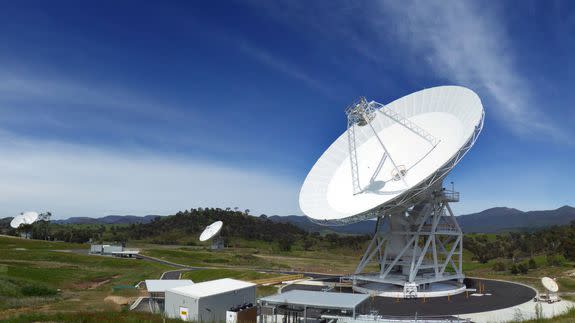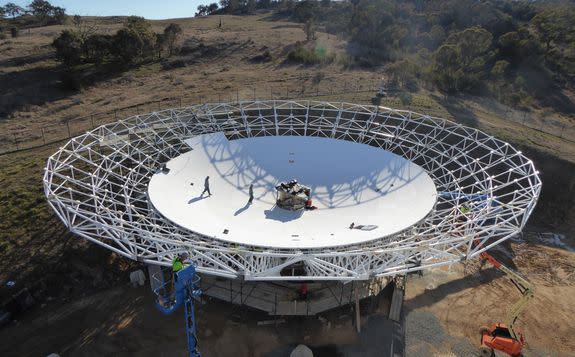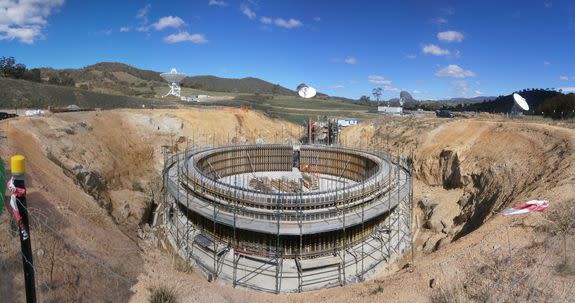New antenna joins NASA's deep space network to support Mars mission

Large, white and rather dishy, NASA's latest spacecraft-tracking antenna unveiled on Thursday has an important job ahead of it.
Deep Space Station 36 (DSS36) joins NASA's Deep Space Network, in which it will play a role in future interplanetary missions undertaken by humans and robots.
SEE ALSO: This is what it looks like to come back to Earth from space
Its home, the Canberra Deep Space Communication Complex (CDSCC), has a long relationship with the U.S. space agency. In 2015, CDSCC was the first place to hear from NASA's New Horizons spacecraft when it flew close to Pluto.

Image: csiro
"This antenna is the culmination of what has been a six-and-a-half-year expansion of the tracking station," Glen Nagle, CDSCC's manager of education and public outreach, told Mashable. "It gives us additional capacity to be able to talk to new spacecraft in years to come, but also to support NASA's future journey to Mars."
NASA invested A$120 million ($91,603,800) in the project to expand its two-way communication capacity with spacecraft, according to the CSIRO. DSS36 joins the antenna DSS35, which launched in 2014.
Nagle said the two dishes, both 34 metres wide, are beam waveguide antennas. Rather than housing their transmitter receiver systems in the dish, the systems are located underground in a concrete cylinder two storeys underground.
"That further isolates the electronics," he explained. "It helps them to be a little bit more protected from radio frequency interference from around the local region and increase their overall sensitivity."

Image: csiro
To have a deep space network, you need antennas around the world — three stations, equidistant roughly around the planet, to have line of sight wherever the Earth is in its rotation. In addition to Canberra, DSN antennas are located in California and Madrid.
There are big plans ahead for the network. Australia has been working with NASA for well over 50 years, Nagle pointed out, but for the last 40 years or so, humans have not left Earth's orbit.
"Now of course, NASA is working toward the capacity with their new launch vehicles to take humans away from Earth's orbit again," he said. "To head back to the moon, to head maybe out to the nearest asteroid, and then of course on the road to Mars."
The CDSCC has already been part of the first test flights of NASA's new Orion spacecraft, which is intended for deep space missions. "If that goes well, a second mission, maybe taking people that time to lunar space again, extending our capabilities," Nagle said.

Image: csiro
Of course, Australia doesn't have its own space agency, meaning we may never see a domestic mission.
Nagle's not worried. "We're not just handling missions for NASA here," he said. "Twenty-seven nations support us right now. They rely on us for that communication work.
"Think of it this way: We're kind of air traffic control for the universe here in Australia."

 Yahoo News
Yahoo News 